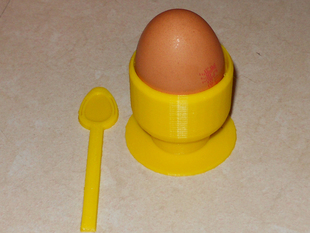The pace of disruption continues to increase rapidly – in the nineties Napster and VoIP showed how digitization left record labels and telcos vulnerable to new methods of distribution and communication. This disruption was once relegated to digitization meaning if you didn’t have a way to convert traditional industries into electrons, you couldn’t disrupt them.
In other words, film was essentially annihilated by photo standards on PCs coupled with cameras capable of taking digital photos. Computer memory in essence became film. This was the transformational step needed.
And for those photos where you wanted something on paper, a color printer allowed high-quality prints to be generated on the fly.
If you think the color printer was disruptive, wait till 3-D printing becomes widespread. If the color printer miniaturized the printing press, the 3-D printer miniaturizes an entire manufacturing supply chain! This may be the most exciting area of disruption we will see over the next few decades. For now the technology is rudimentary allowing you to make things like this face for a fountain or an egg holder but the output of these printers can only get better over time.
And this is where it gets really exciting – as people purchase 3-D  printers they will in-turn be able to manufacture the products they used to have to purchase. This means shippers and retailers are becoming disintermediated. Shippers for their part will still make money shipping the material used in the printers of course but retailers as the current distribution arm for so many of these products may need to start looking for new ways business models.
printers they will in-turn be able to manufacture the products they used to have to purchase. This means shippers and retailers are becoming disintermediated. Shippers for their part will still make money shipping the material used in the printers of course but retailers as the current distribution arm for so many of these products may need to start looking for new ways business models.
In essence, the printer becomes the manufacturer. Think of it as micro-manufacturing.
Enter Nathan Myhrvold, the former Microsoft CTO and alleged patent troll who has received a patent for digital encryption which will protect 3-D designers from having their work stolen by recirculating it freely on the web. The idea is the printer checks to the file to see if you have the rights to it and if so it starts the printing process.
The challenge is, will manufacturers incorporate this technology and if so will they all? After all, the company that makes 3-D printers which has no such mechanism in place will likely see their sales increase dramatically. And if most people have 3-D printers which do not incorporate digital rights management or DRM then a designer utilizing such technology will not be able to have their designs work on the bulk of the printers on the market.
The chicken-and-egg problem is certainly a fascinating one and judging on how technology tends to work I sense DRM-enabled printers won’t become very popular. They may only be used by high-end designers. The world has moved to cheaper and cheaper content over time and it just seems there are always ways to circumvent the system. Hackers will break any DRM system and really determined users will always find a way to get anything digital for little or no money.
This is what has happened with music and movies causing the industry to combat the problem with 99 cent downloads which shows users will pay a small amount to go legit.
In a way I look at 3-D printing as a new sort of platform for innovation and success. In the eighties, desktop publishing allowed anyone with a budget of thousands to compete with publishers who could spend millions. The web in-turn allowed anyone with a budget big enough to run a web server to compete with the largest publishers and TV producers in the world. Likewise, Apple and Google have built platforms allowing developers to instantly deliver programs to the masses with little overhead.
Now, anyone will be able to develop simple products which can be purchased globally. Imagine the disruption here – in the past you would design, contract with a company to manufacture, wait for samples, deal with quality control and place a significant minimum order in the hopes your new product would sell in significant enough numbers to make you money.
Now, you simply design, post and see what happens – some products will be overnight hit s and the many that flop won’t cost more than the creator’s time.
It is really a revolutionary future we are heading towards and once again 3-D printing shows us disruption is truly boundless.






